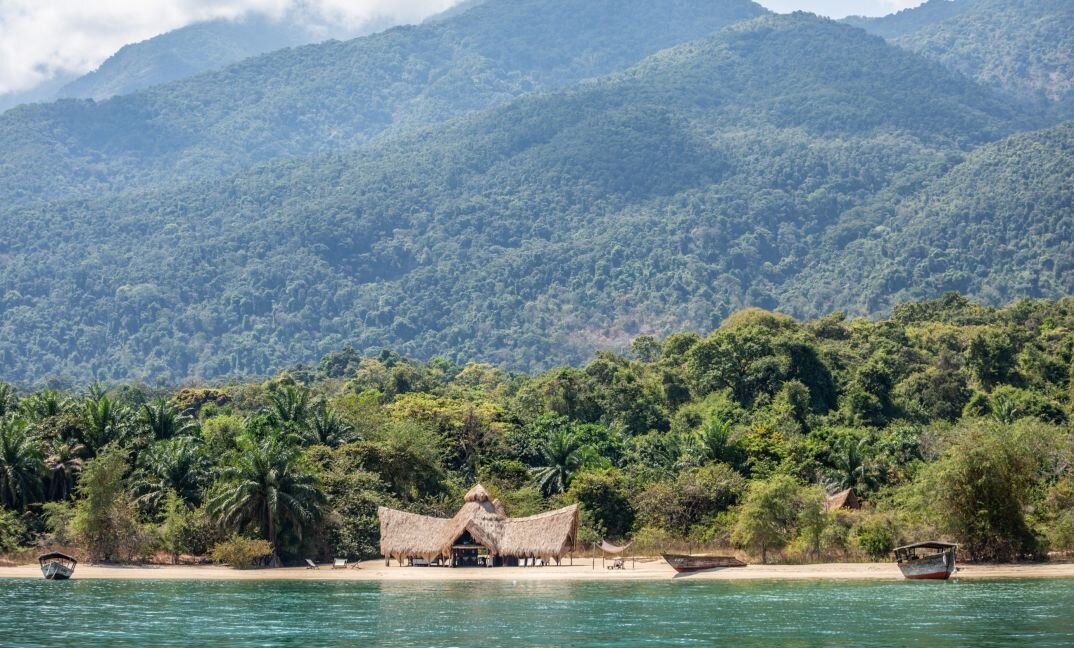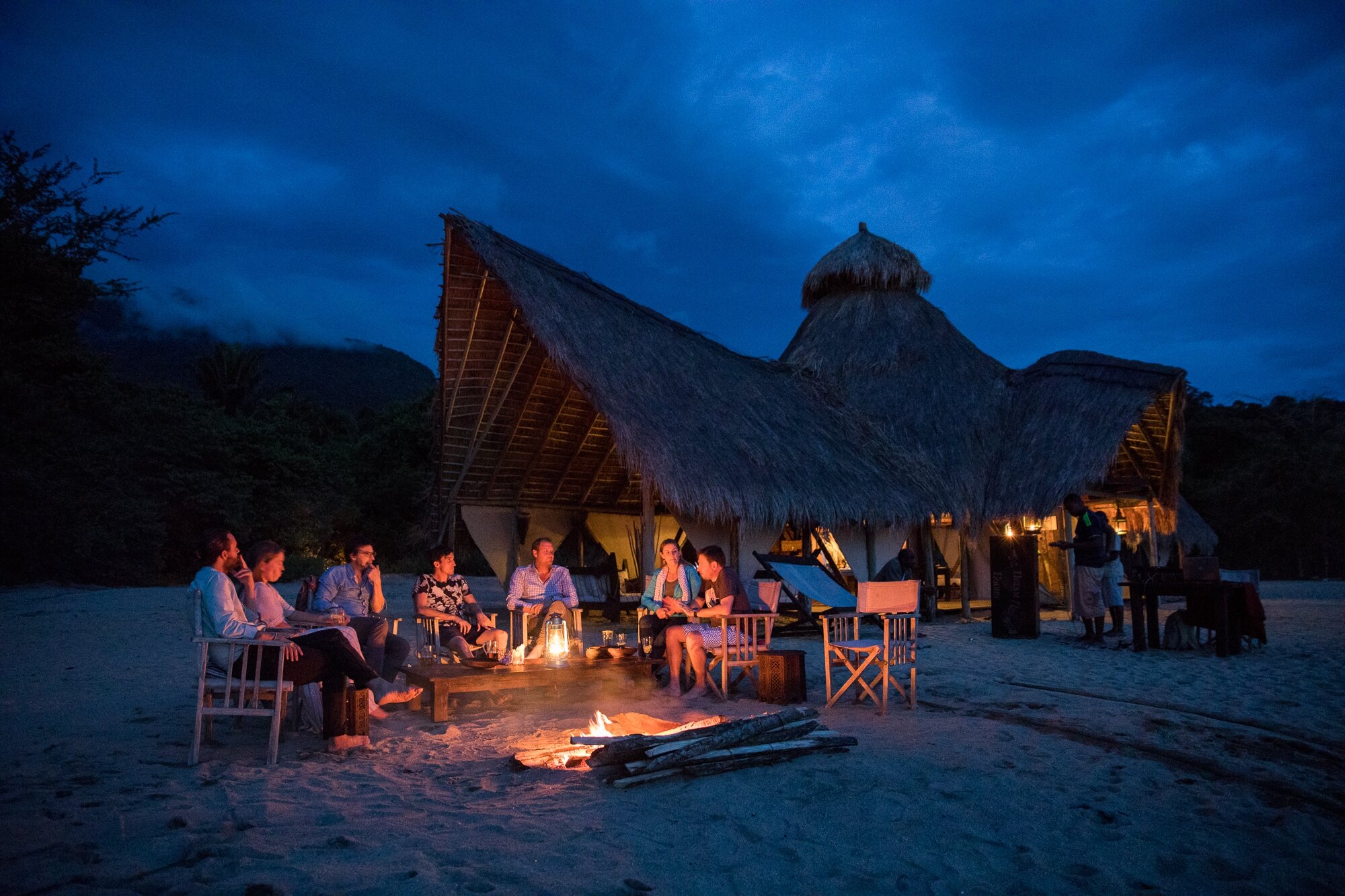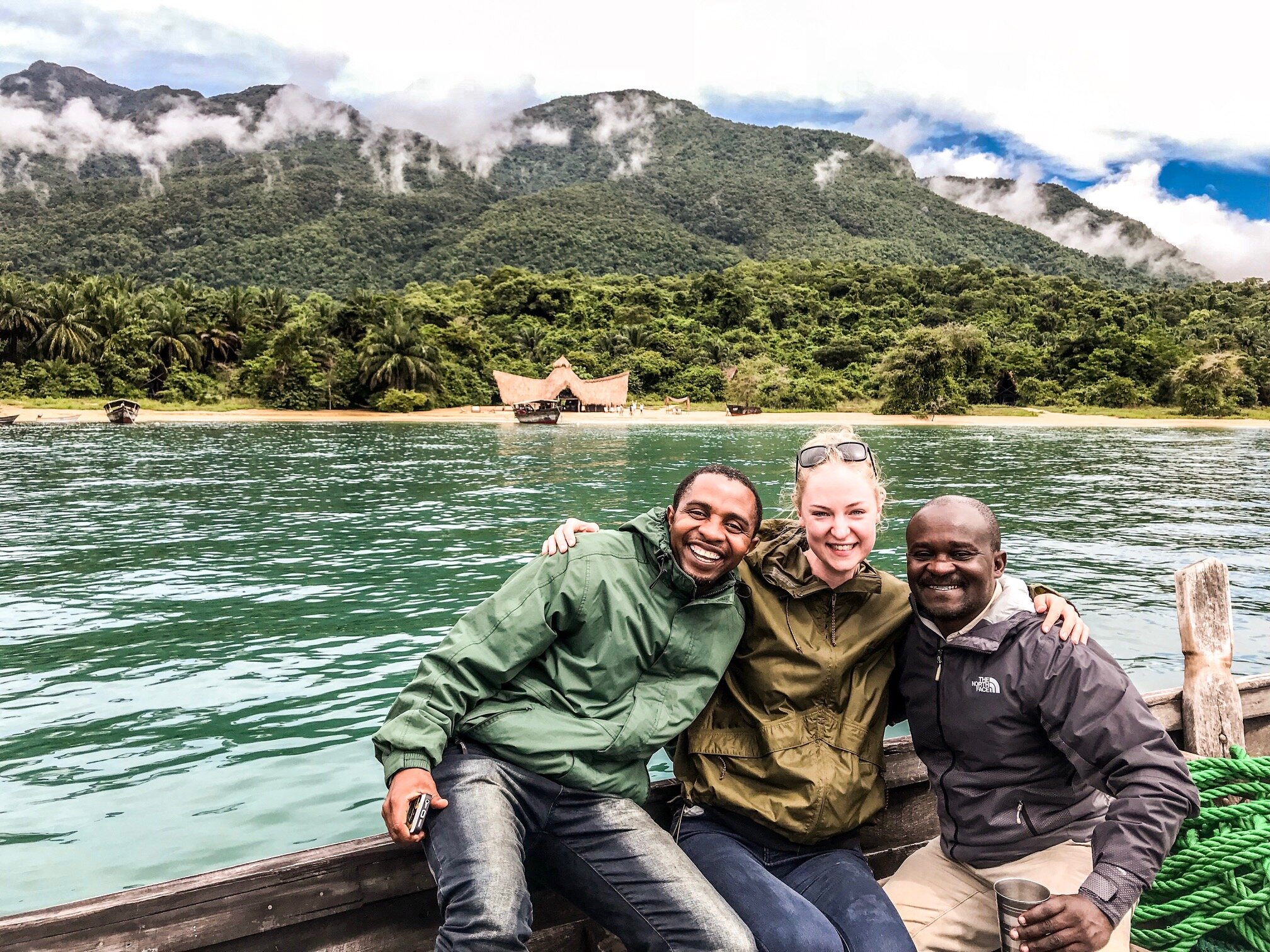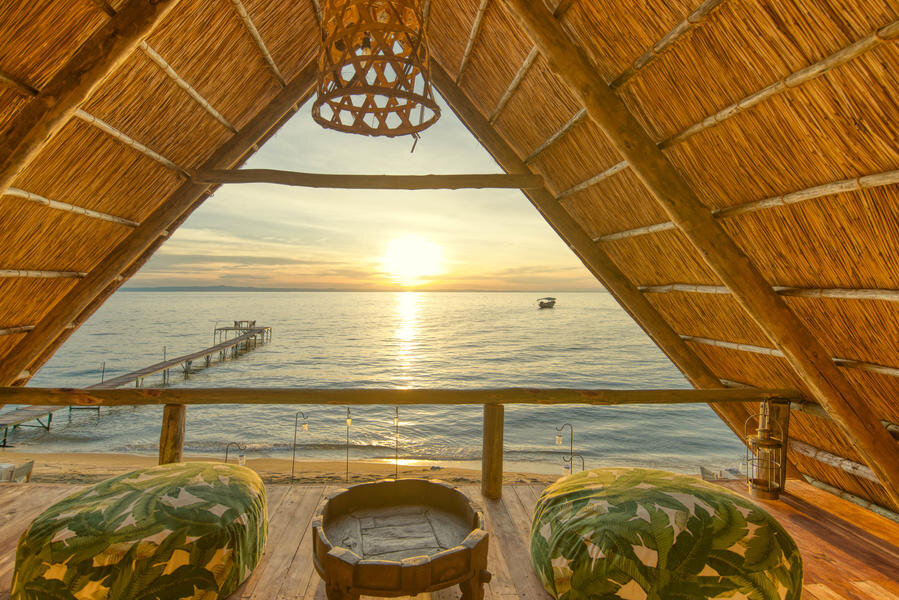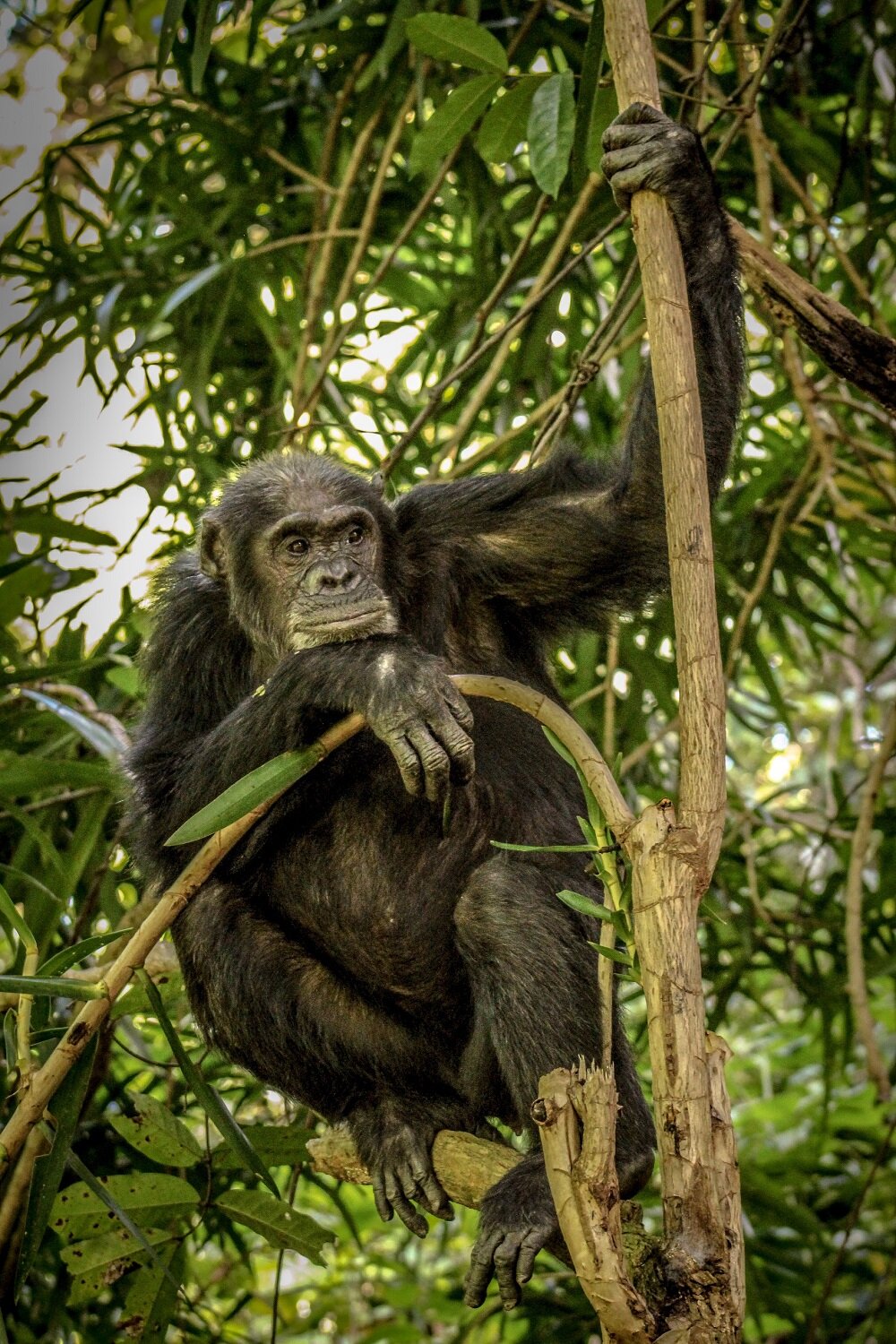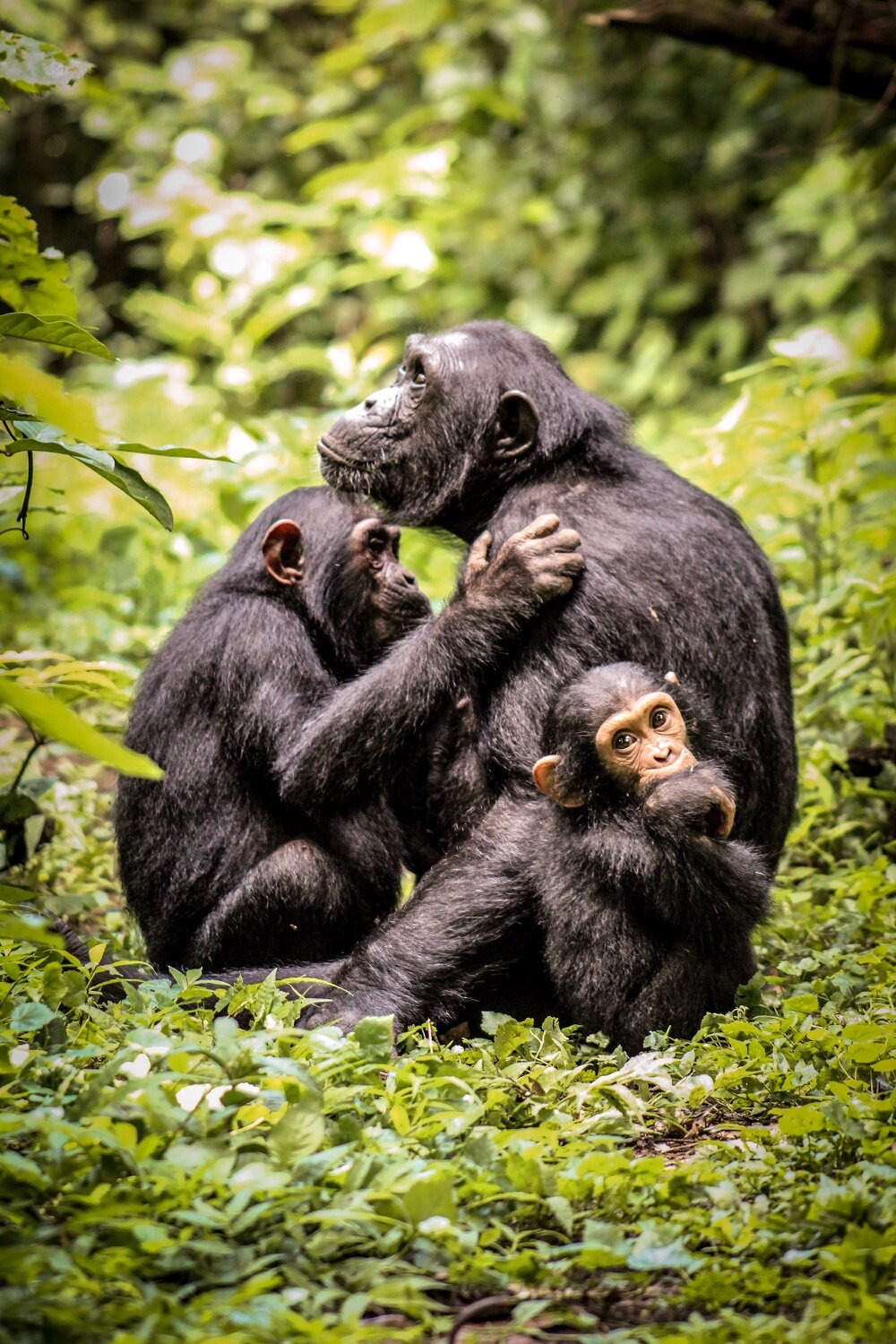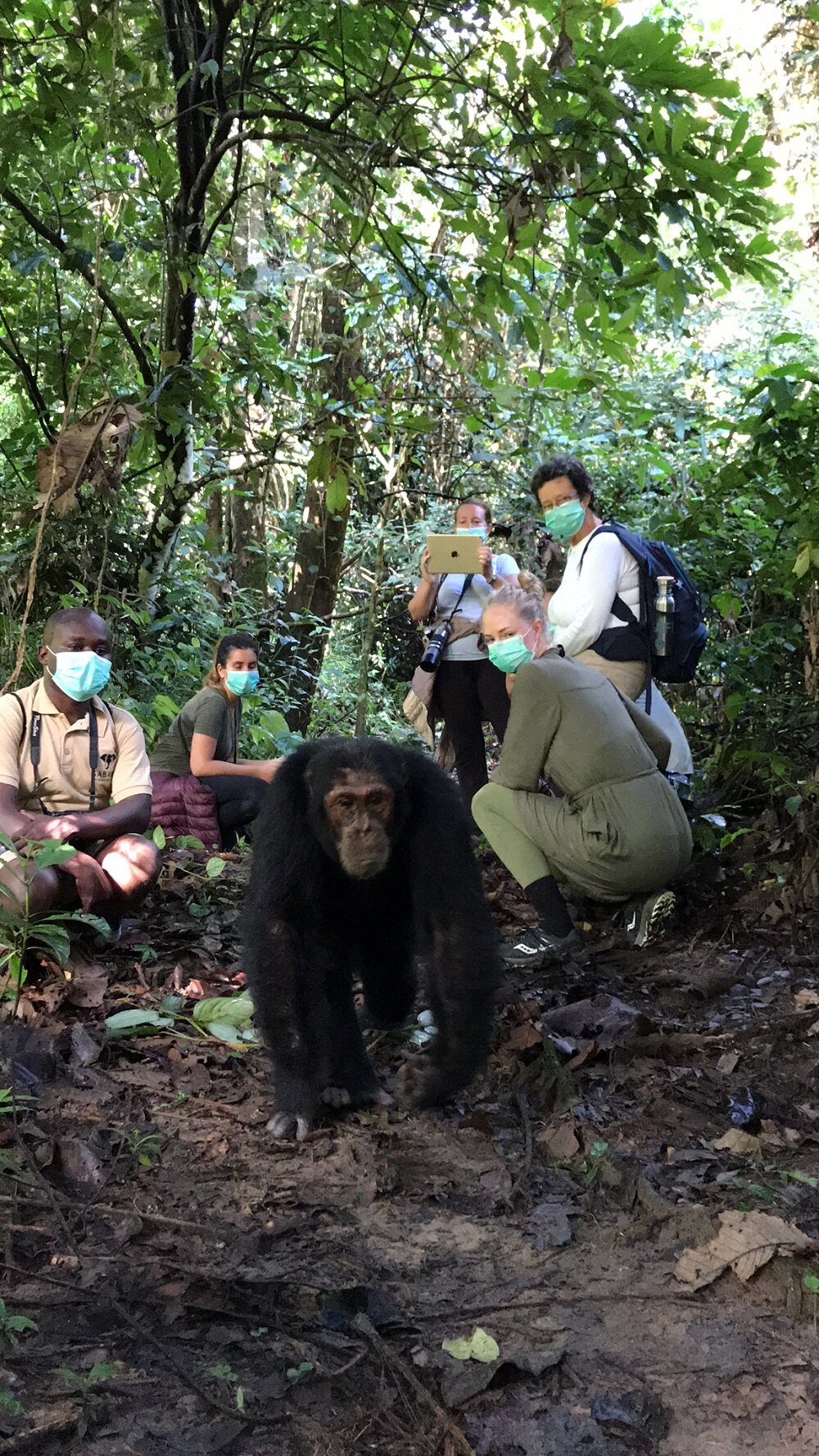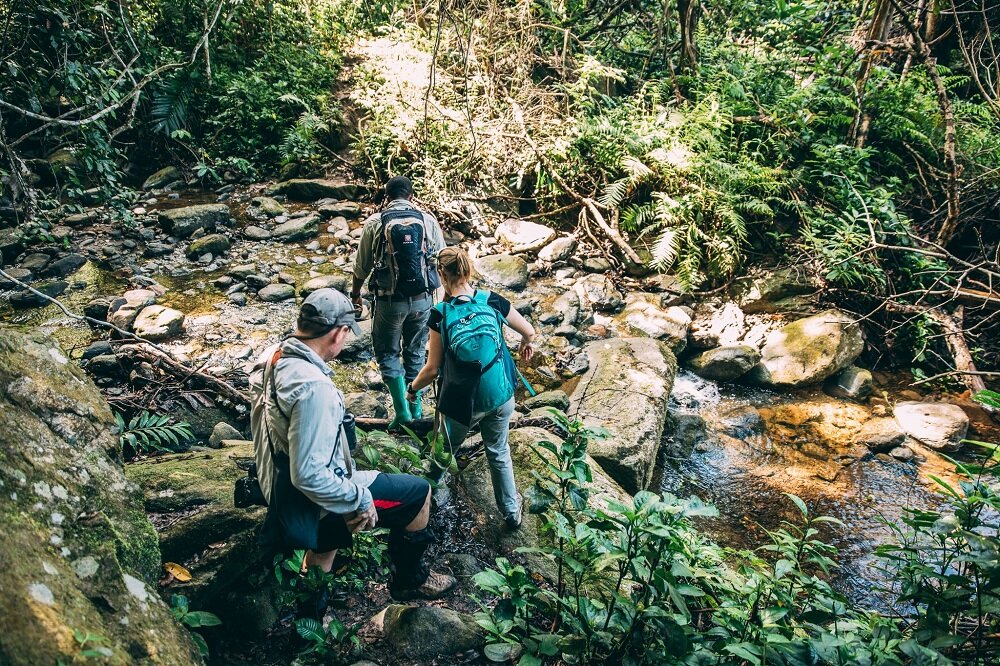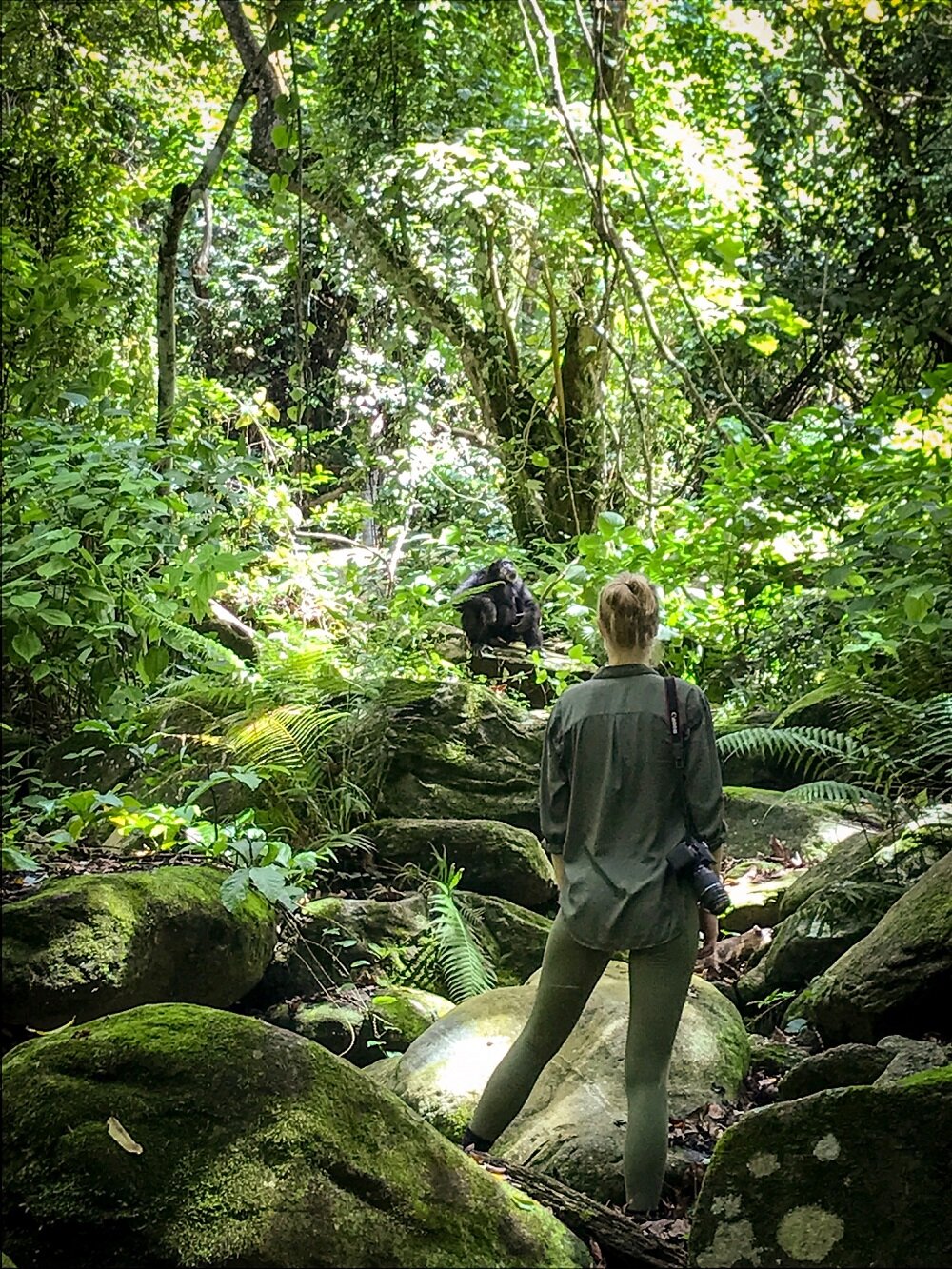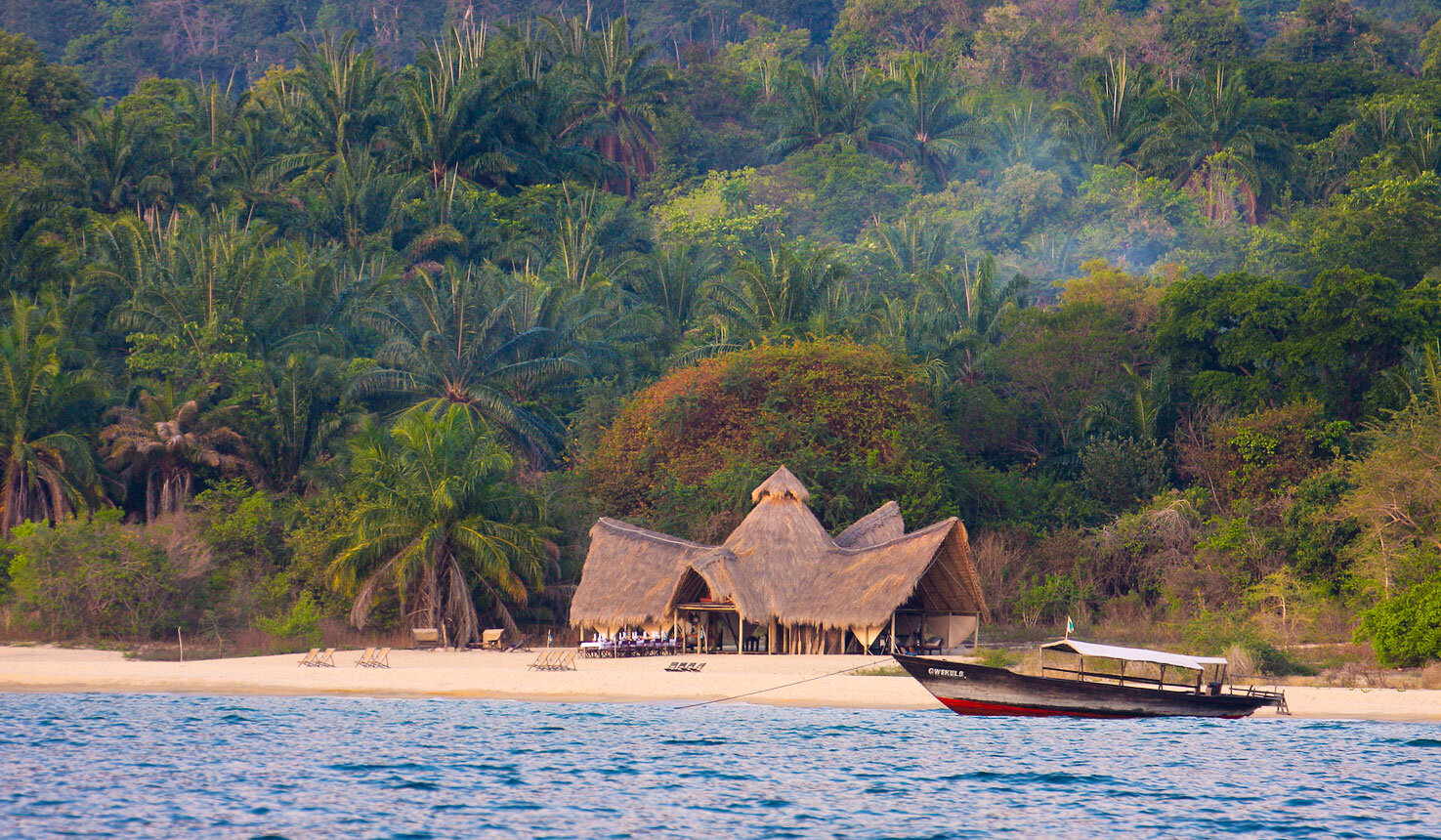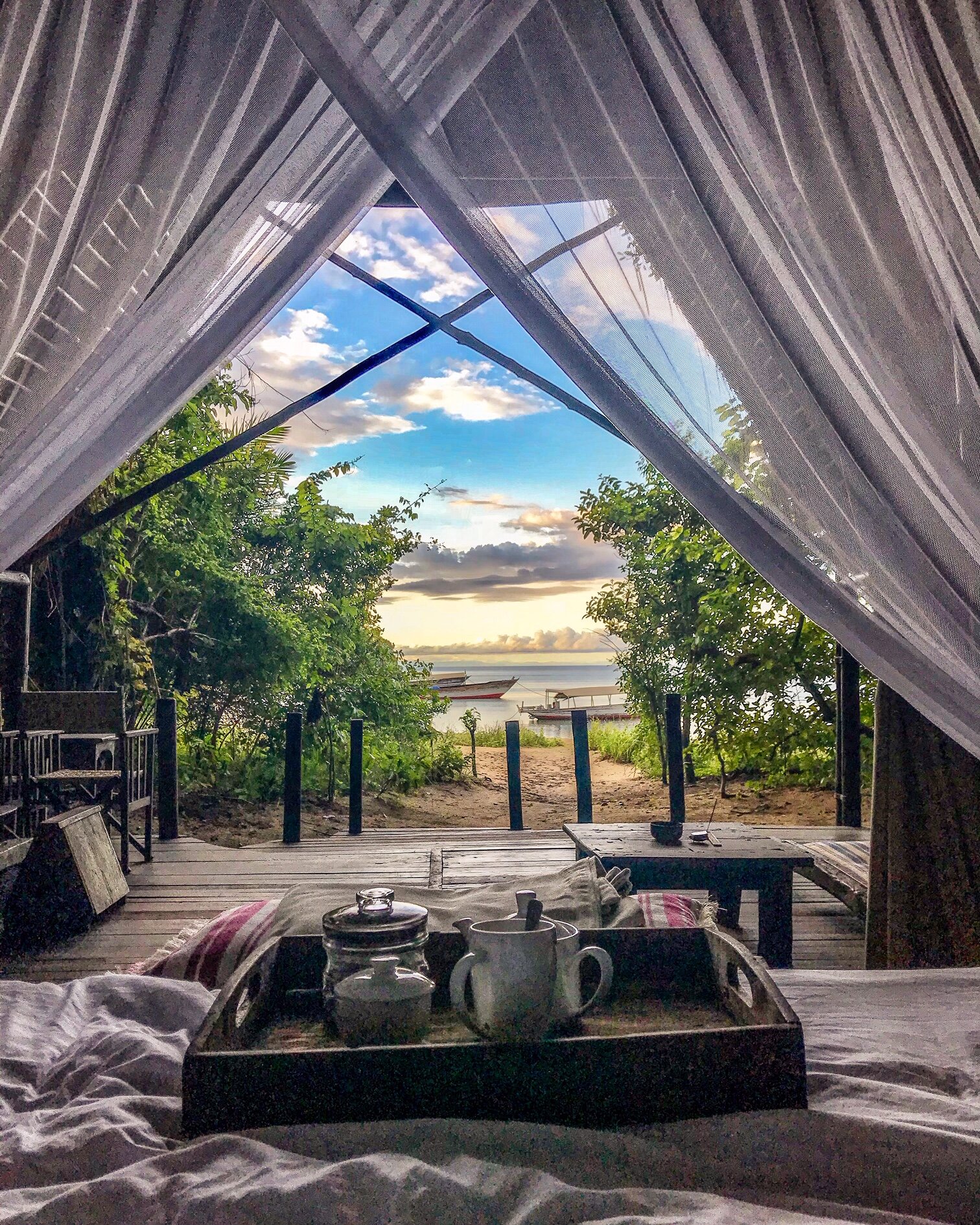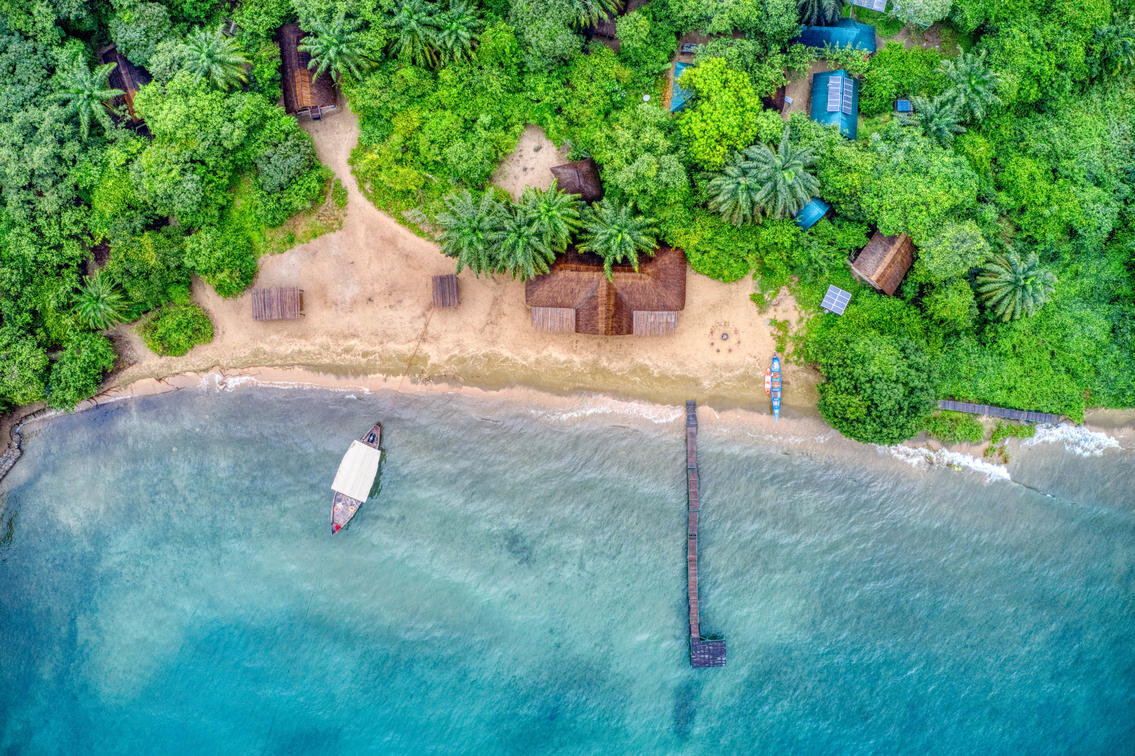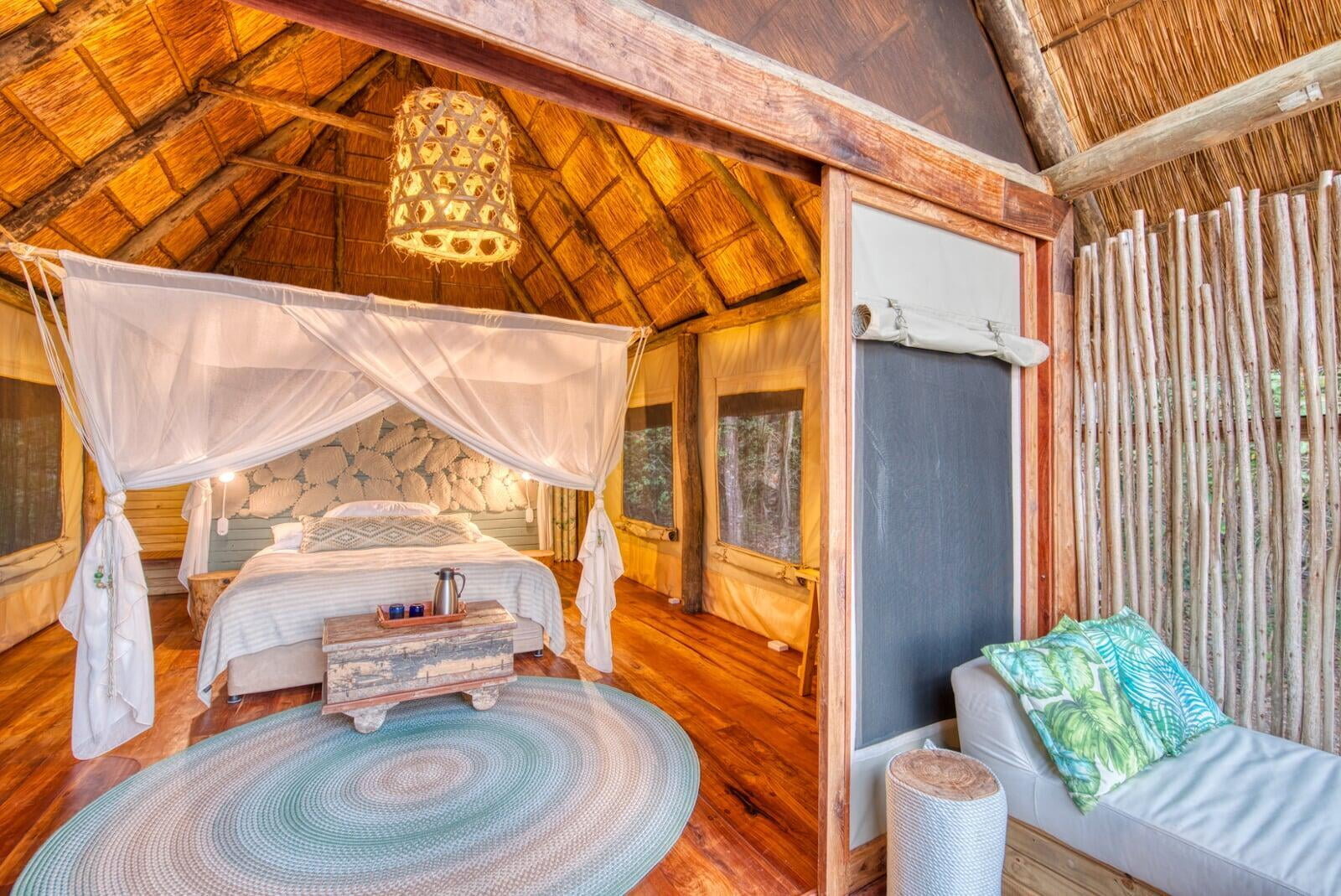Start Planning Your Unforgettable Mahale Safari
The exceptional Mahale Mountains National Park, located in the far west of the country on the shores of Lake Tanganyika and home to the best chimpanzee trekking in Africa, is one of the most unique safari destinations on the entire continent. The lakeshore consists of a beach of fine powder-like white sand, behind which rises a range of imposing mountains with abundant tropical vegetation. The forest is alive with sound as big blue butterflies flit above the streams.
Originally created to protect the thousands of chimpanzees that inhabit the region, Mahale Mountains National Park is renowned for its fantastic sunsets over Lake Tanganyika, one of the oldest and deepest lakes in the world, which makes it an essential stop for anyone planning a Tanzania photo safari. The park is teeming with life, rivers and waterfalls are everywhere, and around the shoreline of the lake are the most unspoiled white sandy beaches you can imagine.
The park’s breathtaking variety of habitats include grasslands, rainforest, alpine bamboo and woodlands where approximately 50 species of animals have been noted, predominant among these species being assorted monkey and ape families. Over 90 unique species of fish also swim in the clear waters of the lake.
Chimpanzees in tanzania’s mahale mountains national park
Covering about 1,600km² of the Mahale Mountains, around 1,000 chimpanzees make this national park their home. Of most significance, since 1965, one group of Mahale chimps – the Mimikire clan – has been monitored by researchers. The M-group, as they are commonly known, consists of around 60 chimps. They go where they want and when they want but are relaxed near people, so it's possible to track and observe them from very close quarters. For the benefit of the chimps' health, all human visitors on chimpanzee safaris are required to wear surgical masks – which will be provided.
The hike to reach the Mahale chimpanzees can vary from a leisurely walk lasting about 20 minutes to a more strenuous hike that can last the majority of a day. They are easiest to see towards the end of the dry season (August to October), as the forest paths are at their driest and least slippery, and the chimps are usually the closest to the shore. To see the chimpanzees it’s always wise to bring walking boots, long trousers and a small backpack (for cameras and binoculars).
Although we can't 100% guarantee it, in the Mahale Mountains it's very likely to see chimpanzees. You'd be very unlucky to be here for several days and not find them. More often, you'll be able to sit and watch them grooming, tussling, foraging, bickering and taking care of their young. Sitting in the forest, watching chimpanzees getting on with their daily lives is an unforgettable experience – and that’s what makes the chimp safaris in Mahale so amazing.
Chimps are the main attraction, but there are plenty of other smaller primate species to see as well, birding is very good and hippos and crocodiles are always close! Leopards often come and visit but you are lucky to experience an actual sighting.
*Please note: The minimum participating age for chimpanzee trekking as determined by TANAPA is 12 years old, so it’s still a viable family Safari option, but only for older kids and teenagers.
Activities in mahale
Chimpanzee trekking is the main attraction of Mahale, but it offers so much more. It is a truly beautiful and remote location and is often compared to paradise. Just being here and taking a stroll on the shoreline of Tanganyika is spectacular. You can go snorkeling, kayaking or fishing out on the lake, spend hours walking through the forest spotting other smaller primates and plenty of birds, or climb through narrow tracks to discover hidden waterfalls.
Getting to Mahale
Getting to the park is an adventure as it is accessible only by air and boat. The isolation has helped Mahale Mountains to remain untouched; by light aircraft it takes four or five hours to reach here from Dar or Arusha. However, the result is that Mahale has just a few hundred visitors each year. Due to its exclusive location it is costly to visit – but it’s very different from anything else in Tanzania, and totally magical! There are no roads in the park, only forest paths through the lush vegetation. If remote safari locations appeal to you, also check out our Selous Game Reserve Guide and our Ruaha National Park Guide!
The least expensive way to get to Mahale is to use twice-weekly scheduled flights which link this park with Arusha. Operating on Mondays and Thursdays only, their relatively high cost make this park one of Tanzania's most expensive (but very worthwhile!) destinations.
When to visit mahale
The time of year determines the difficulty of the chimp trekking:
June-early July: Rains settle, chimps are high up, tougher trekking
July-October: Dry, and we expect easier chimping as they decend the slopes
November- March: rain, hot and humid - chimps climb higher as the season progresses. They decend back down in Jan/Feb
April-May: closed
The best time to visit Mahale is during the dry season that runs from July through to late October. Chimpanzees can also be viewed at other times of the year but it may just require a little bit more walking. In the dry season, it is definitely worth combining Mahale with Katavi National Park. The attraction of visiting Western Tanzania is its remote location, and such an isolated African safari is difficult to come across anywhere else on the continent. Unlike the Selous, Ngorongoro Crater or the Serengeti, access to Mahale is not as frequent, since flights from Arusha to Mahale only depart and arrive twice a week.
AccommodationS in Mahale
By the time you've spent the time and money it takes to get to Mahale, you might as well stay at the absolute best. Nomad’s Greystoke Mahale is famous throughout the world for not only its location but for the “barefoot luxury” it offers. The other, slightly cheaper option is Mbali Mbali Mahale, just a little further up the coast.
Please get in touch if you have any questions about our incredible Mahale chimp trekking safaris! What are you waiting for? Start planning your next big adventure!


